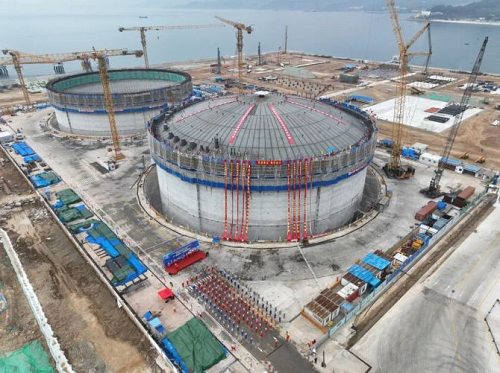

SEARCH
LNG, formerly known as liquefied natural gas, can be transported to application areas by ship, car or rail after being liquefied at ultra-low temperatures. LNG vehicle storage tank transportation is a common mode of transportation at present. It is convenient and fast, and it is easier to transport LNG to large transportation difficult-to-reach gas transmission stations, industrial factories and refueling stations.

What are the basic components of LNG vehicle filling stations?
LNG vehicle filling station is mainly composed of LNG tanker, LNG storage tank, unloading/regulating supercharger, LNG cryogenic pump, gas filler, LNG vehicle system and other equipment. LNG vehicle filling stations are generally divided into the following two types:
Conventional station: Built in a fixed location, the LNG is stored in the LNG storage tank through the unloading device, and the filling machine is used to fill the bus with liquid.
Skid loading station: The equipment and devices related to the filling station are installed on the car or skid body. The factory is highly integrated, easy to transport and transfer, and suitable for small-scale filling station.
In the process of LNG cryogenic liquefaction, storage tanks and LNG pipelines need to be cold-protected. The cryogenic liquefaction temperature of LNG can reach -162℃, so the applicable temperature of elastic felt needs to meet the temperature below zero. Uetersen glass fiber elastic felt is developed for the LNG field special insulation and cold protection. It has good insulation and cold protection performance, but also has high quality resilience. Through the tough and slim glass fiber reset, it can resist the thermal expansion and cold contraction brought by low temperature.
As a special transportation tank, automobile storage tank is mainly used to transport liquefied natural gas. Mobile storage tank generally adopts a combination of double inner and outer tanks, and adopts gas or thermal insulation materials to keep warm in the middle, so as to form anti-temperature gasification conditions for transportation.